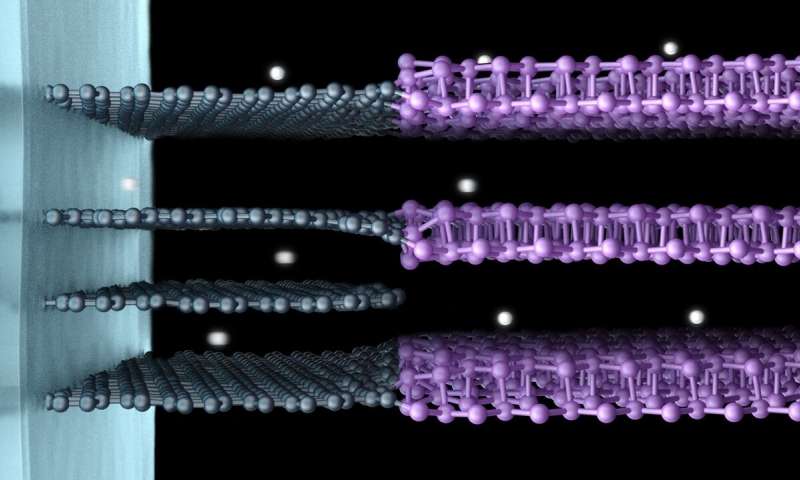Engineered electrode material moves battery development closer to fast charging
8. 10. 2020 | Phys.org | www.phys.org
Electric vehicles are gaining in popularity, but their long charging time is a significant detraction for potential customers. While a typical SUV with a combustion engine could travel 300 miles with a five-minute refuel, a state-of-the-art electric vehicle takes about one hour to store enough energy to travel the same distance. The technology for a high-capacity lithium-ion battery that charges quickly and operates efficiently is still an unrealized goal—but researchers are now closer than ever.
An international team of researchers published details of an engineered electrode material that allows for such advanced batteries in Science. "The combination of high energy, high rate, and long cycle life is the holy grail of battery research, which is determined by one of the key components of the battery: the electrode materials," said Hengxing Ji, professor at the University of Science and Technology of China (USTC). "We aim to search for an electrode material that can make a dent in performance metrics from laboratory research and can hold the promise to stand with the industrial production techniques and requirements."

The researchers turned to black phosphorus, a material that has been considered for use in electrodes before but is usually abandoned due to its tendency to deform along its layered edges, making the transfer of lithium-ions deeply inefficient and rendering a lower quality material. By combining black phosphorus with graphite, the chemical bonds between these two materials stabilize and prevent the problematic edge changes.
Read more at Phys.org
Image Credit: Hi Qianhui, Dong Yihan and Liang Yan
-jk-




